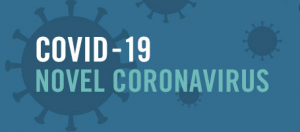 There’s a new viral kid on the block and he’s mean. Real mean. He goes by Novel (New) Coronavirus (SARS-CoV-2), and gives you the previously unknown disease termed COVID-19. That’s the biological term for Corona Virus Disease identified during the dying days of 2019. Now, in two and a half months, this nasty bug has virally spread from a small shop in China to the far corners of the world. It’s on an unprecedented multiple-mutation path, and that’s what makes it so deadly.
There’s a new viral kid on the block and he’s mean. Real mean. He goes by Novel (New) Coronavirus (SARS-CoV-2), and gives you the previously unknown disease termed COVID-19. That’s the biological term for Corona Virus Disease identified during the dying days of 2019. Now, in two and a half months, this nasty bug has virally spread from a small shop in China to the far corners of the world. It’s on an unprecedented multiple-mutation path, and that’s what makes it so deadly.
Severe Acute Respiratory Syndrome caused by the Coronavirus of 2019 (SARS-CoV-2) is particularly dangerous for people with compromised immune systems. That profile takes in newborns, the elderly, folks with immunity disorders and those in generally weak health. This combined demographic comprises a huge part of the human population.
There are two parts to this pandemic that’s scaring the pants off people. One is the virus itself which is a brand new member of the Corona genus. The other is the disease it causes which everyone now recognizes as the name COVID-19. How bad this will get is anyone’s guess, but the world health authorities are preparing for panic.
There is little need to panic, though. The key to surviving this outbreak and “flattening the curve” as the containment process is called, is knowledge and caution. Properly protected, you can minimize your exposure of viral transmission and respond quickly if you’re contaminated. Keeping your distance in social settings, washing/decontaminating your hands and shielding your face (eyes/nose/mouth) are the most important things you can do—they’re the three top tools to tackle the threat.
What is the Novel Coronavirus?
A virus is a microscopic speck of organic non-cellular material that sits on the fringe of being alive and being inert. On its own, a virus has a limited existence unless it finds a host of organic cell matter. That can be human, animal, plant or any other life form that replicates itself through cellular division.
 According to information from the National Center for Biotechnology Information (NCBI), there are millions of different viruses above, on and in the Earth. NCBI has identified 75,000 separate viral genome sequences and has 5,000 of these described in detail. Coronavirus-19 was new to them, and they’re doing everything in their power to figure this one out. It’s not coming easily.
According to information from the National Center for Biotechnology Information (NCBI), there are millions of different viruses above, on and in the Earth. NCBI has identified 75,000 separate viral genome sequences and has 5,000 of these described in detail. Coronavirus-19 was new to them, and they’re doing everything in their power to figure this one out. It’s not coming easily.
To survive and thrive, a virus must find its way to a host and invade its cells. In humans, that happens through absorption into your airways, eyes or an opening in your skin. Once a virus attaches itself to your cell, it transmits encoded instructions to make the cell copy the virus’s genetic profile and essentially produce clones.
The Coronavirus of 2019 isn’t satisfied with cloning itself. It wants to mutate and create biologically diverse offspring. That presents an enormous challenge to epidemiologists who get a vaccine made for one strain, only to find the bug is far ahead of them with mutants.
 The Coronavirus-19 is perfectly suited for mutating. It’s a single-strand ribonucleic acid (RNA) based bug which is simple, quick and cheap to reproduce. Many other viruses are double-strand deoxyribonucleic acid (DNA) creatures. They’re much harder to duplicate and change form.
The Coronavirus-19 is perfectly suited for mutating. It’s a single-strand ribonucleic acid (RNA) based bug which is simple, quick and cheap to reproduce. Many other viruses are double-strand deoxyribonucleic acid (DNA) creatures. They’re much harder to duplicate and change form.
The RNA-based Coronavirus-19 presents another problem. Its specialty is attacking the lungs and causing acute respiratory disease. This results in pneumonia.
Pneumonia is a deadly disorder. It’s usually the coup-de-grace for virally-infected people who have no natural ability to fight back. It’s also extremely difficult for medical professionals to treat pneumonia. Combined, pneumonia is a serious development in deteriorating health.
Where Did Coronavirus-19 Originate and Where is it Going?
Medical investigators are certain that this virus first infected a human being at a marketplace in Wuhan, China. The market is primarily a seafood shop, but it does deal in live animals. One worker was exposed to the virus there in mid-December of 2019, and medical experts feel it’s highly likely the bug came from a bat.
 Normally, viruses don’t easily transmit from animals or plants to humans. There are exceptions like the swine flu that came from pigs and the bird flu that started in fowl. However, this seems to be the first bat-related viral outbreak except for rabies infections which can also be deadly.
Normally, viruses don’t easily transmit from animals or plants to humans. There are exceptions like the swine flu that came from pigs and the bird flu that started in fowl. However, this seems to be the first bat-related viral outbreak except for rabies infections which can also be deadly.
Once the epidemic became a pandemic, it spread like wildfire. By the way, an epidemic is a local outbreak that defies containment. A pandemic (from the Greek words “pan” meaning “all” and “demos” meaning “people”) is a word-wide viral fire that’s out of control.
That’s the current situation with the world fighting the Coronavirus-19 pandemic. (This piece was published on March 21, 2020). No one knows where it’s headed. The only certain thing is that it’s highly contagious and not at all contained.
Two days ago, the Governor of California wrote to the President of the United States with a plea for federal help to curb the COVID-19 pandemic. Clearly, the Governor sees this as a crisis of monumental proportion. This is a quote from the letter:
“California has been disproportionately impacted by repatriation efforts over the past month. Our state and health care delivery system are significantly impacted by the rapid increase in COVID-19 cases. Our case rate is doubling every four days. We project that 56 percent of California’s population—25.5 million people—will be infected with the virus over the next 8 weeks.”
The Governor states the situation is grave. He tells the President that California’s health care resources will be so overloaded with COVID-19 response that they won’t be able to address critical acute care needs like heart attacks, strokes and vehicle accidents. He also equates the crisis as threatening all of America.
It’s not just America that’s in peril. It seems China has some reprieve after taking draconian steps to quarantine people, however, countries like Italy are getting it bad. And it’s not just “first world” places like Europe and North America that are going to suffer. This bug is now everywhere except Antarctica.
Why is Coronavirus-19 and COVID-19 so Threatening?
One reason—probably the main reason—that COVID-19 is so threatening is because humans have no natural immunity to animal-transferred viral invasion. There is nothing that can be done about COVID-19 except riding it out while your body naturally fights it off. That takes time, and many infected people simply can’t afford the luxury of time.
There is no medicine or vaccine to treat Coronavirus-19 infections and COVID-19 disease. At least not yet. Your body only has two options. One is for your immune system to directly attack and kill the viral copies and mutations. The other is for your immune system to cut off and kill compromised cell tissue.
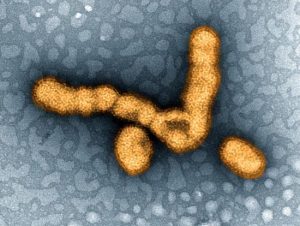 Coronavirus-19 is a lung killer. Its habitat is the respiratory system and, once in place, your body will create mechanisms to fight the lung invasion. That means making fluids and this is what pneumonia is. If you’re in an overall weak condition, your body cannot control your lung fluids. You slowly drown, and there’s little can be done—even if you’re in intensive care.
Coronavirus-19 is a lung killer. Its habitat is the respiratory system and, once in place, your body will create mechanisms to fight the lung invasion. That means making fluids and this is what pneumonia is. If you’re in an overall weak condition, your body cannot control your lung fluids. You slowly drown, and there’s little can be done—even if you’re in intensive care.
Another factor in why Coronavirus-19 is so threatening is that it has an unusual rate of mutation. So far, scientists have isolated two distinct Coronavirus-19 strains. One is the “S” stain which occurs in about 30 percent of diagnosed cases. The other is the “L” strain conversely found in 70 percent. Alarmingly, the L-strain is much more aggressive and it mutated from its S cousin.
Epidemiologists around the world are extremely concerned that more strains of Coronavirus-19 are in the works. In perspective, the S-strain Coronavirus-19 is ten times more potent than the seasonal influenza virus which makes an annual visit. No one knows how strong these projected “superbugs” like L-strain will be.
How Does the Coronavirus-19 Spread?
The Coronavirus-19 requires physical contact to spread between bodies. It requires an infected person to give it to another directly or indirectly. Direct contact examples are sneezing and breathing in droplets, handshakes or sharing infected objects. Indirect contamination occurs when a droplet of human body fluid (usually mucous) lands on a surface where it’s picked up by another party.
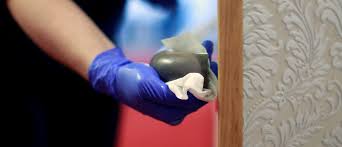 Common surfaces like public pin-pads, handrails and doorknobs are ideal spots for a Coronavirus-19 to hold on and wait. Cash is another filthy substance that flows between hands and harbors the fugitive. In fact, cash can be a worst offender, both paper and coin.
Common surfaces like public pin-pads, handrails and doorknobs are ideal spots for a Coronavirus-19 to hold on and wait. Cash is another filthy substance that flows between hands and harbors the fugitive. In fact, cash can be a worst offender, both paper and coin.
How long the virus stays volatile is a good question. Current literature suggests a virus like this one can stay active for anywhere from a few hours to many days. Temperature, humidity and surface composition are factors in virus survival. So is air movement and competing contaminants like chemicals and other pathogens.
The Coronavirus-19 is a tiny, tiny particle. It’s so small that it can only be seen through an electron microscope. However, it’s big in numbers and there can be an enormous amount of individual virus particles in a single drop of snot.
All it takes is one single virus particle to infect you. From there, the Coronavirus-19 virus has a rapid rate of multiplying. You can pick up a virus and be symptomatic in no time. You can also be infected and be asymptomatic throughout your infectious period.
There simply isn’t enough known about this novel virus to write a playbook for it. As a virus rule-of-thumb, most people are contagious for a 14-day period from scooping the bug till it’s over. That, however, is not a done deal. You can be a walking viral machine and not know it. That goes for the person beside you.
What Can be Done to Stop the Spread of Novel Coronavirus-19?
The short answer is “lots”. It starts with isolating people with infections until the bug has run its course and they’re no longer contagious. That’s a bitter and expensive pill to swallow, but it’s the only thing that works. At least until a vaccine comes along and that’s some time out.
Total isolation, or quarantine actions, are harsh steps. However, they’re nowhere near as harsh as the other alternative which is spectacular sickness and death. If quarantine/isolation measures aren’t practical, then social distancing is the next best measure. A distance suggestion is 3 to 6 feet or 1 to 2 meters, but the further the better seems the safest.
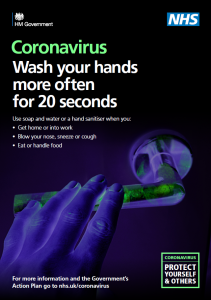 Washing your hands frequently or using an alcohol-based hand sanitizer is mandatory. Soap and ethanol are mortal enemies to the Coronavirus-19, and it’s hand-to-face contact that really spreads this guy around. There are no known scientific studies to determine where hoarding toilet paper fits into your viral protection plan, but there’s plenty of proof suggesting TP is helpful for other bodily functions.
Washing your hands frequently or using an alcohol-based hand sanitizer is mandatory. Soap and ethanol are mortal enemies to the Coronavirus-19, and it’s hand-to-face contact that really spreads this guy around. There are no known scientific studies to determine where hoarding toilet paper fits into your viral protection plan, but there’s plenty of proof suggesting TP is helpful for other bodily functions.
Gloves, on the other hand, are excellent protectors for one-time or single use. That’s provided you refrain from touching your face while being gloved-up which is easier said than done. Bear in mind that your skin is as good a protector as a latex covering. The trick is washing your hands or discarding your gloves between contacting your mucous membrane orifices.
There are varying opinions about mask effectiveness. Some feel masks are better defenses to protect others from you than vice versa. The Coronavirus isn’t often airborne except for an immediate expulsion in close range. If you peel off your mask while still having contaminated hands or gloves, it’s pointless protection. Also, conventional surgical masks, or even regular respirators, don’t protect your eyes. Full face shields are much better.
It’s all about limiting exposure, keeping your distance and minimizing unsanitary hand-to-face contact.
The trick to taming this terrible threat is mass-cooperation between our fellow human beings. This is the time to stop all non-essential exposure. It’s a suck-back and reload situation. It might be a good time to just read a book while staying home.
So far, there’s been amazing interaction between health authorities and political personnel. This is a unique time in human history. What makes this different from other pandemics is that our experts have much better communication ability than in past outbreaks and have responded, for the most part, with speed.
So has cooperation among the public. There’s been some fear factor and some fake news. That goes on with every crisis, and that’s to be expected in this one, too. The Coronavirus-19 fight will be won. Unfortunately, there’ll be casualties along the way.
 Casualties fall into two groups in our interconnected society. One is health care workers and pandemic victims. The other group is financial—business and personal. There’ll be few segments not taking a punch in the gut from this new kid’s viral viciousness. Yet, our societies will survive and so will you.
Casualties fall into two groups in our interconnected society. One is health care workers and pandemic victims. The other group is financial—business and personal. There’ll be few segments not taking a punch in the gut from this new kid’s viral viciousness. Yet, our societies will survive and so will you.
The key to surviving this viral outbreak and “flattening the curve” as the containment process is called, is knowledge and caution. Properly protected, you can minimize your exposure to viral transmission and respond quickly if you’re contaminated. Keeping your distance in social settings, washing/disinfecting your hands and shielding your face (eyes/nose/mouth) are the most important things you can do—they’re the three top tools to tackle the threat.

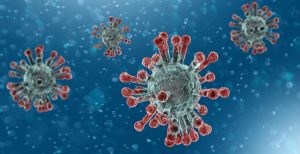


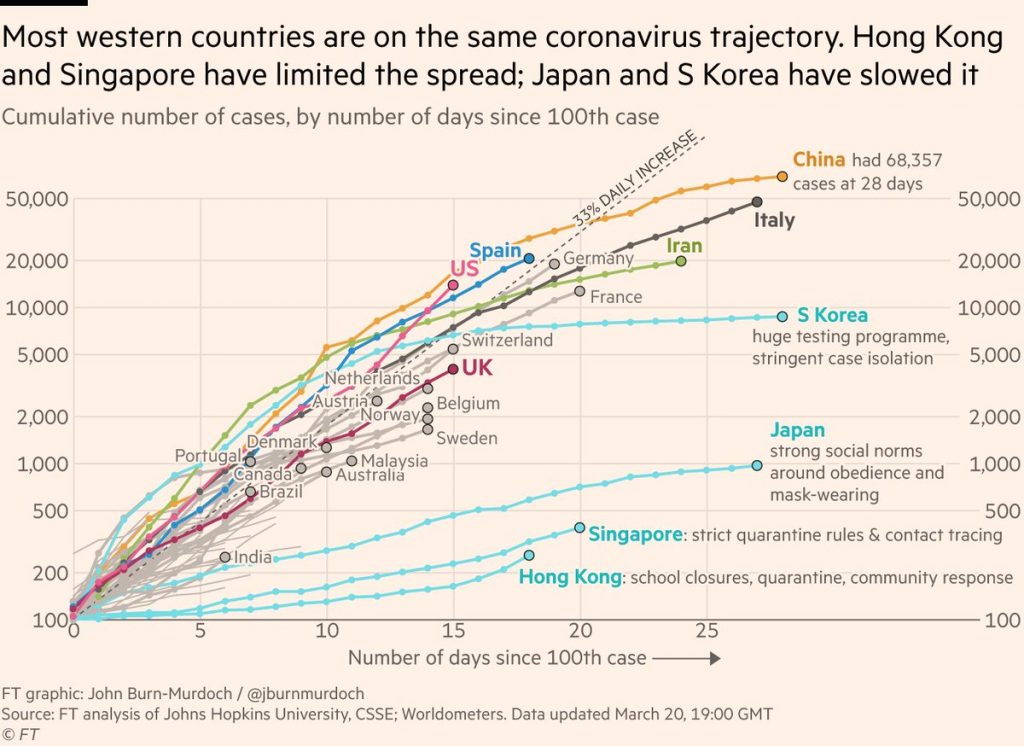

Several times I have read that the human race will end with a whimper.
Let us pray that now is not that time…
I’m optimistic we’ll get through this crisis in due course, but I fear there’ll be grave ramifications for many people both in health and economic strife. Thanks for commenting, Joan.
Thanks for this Garry — one of the most cogent and concise articles I have so far read on the topic — and I work in a hospital with eminent pneumologists, immunologists, allergists , epidemiologists and endocrinologists. Thank you.
Here, in Barcelona, we’re in total lockdown — only food stores, pharmacies and post offices remain open. Public transit still operating at 50% of usual schedule with a 50% capacity rule. As of today 30,000 plus positive cases; 394 people died yesterday; and around 2,000 people in intensive care.
You refer to handrails and doorknobs — totally agree. HOWEVER, I feel you should also add CASH, yes, physical money — coins and paper. I politely and strongly urge you to caution your readers to STOP USING CASH — use your debit card — or phone pay system. Cash is a far more potent carrier than door handles. People working in stores who handle cash should/must wear gloves. Everyone who has real, genuine need to be out and about should be wearing gloves.
All the best, and thanks again — I shall likely post links to your article to friends and family in the UK who, sadly, still haven’t got with the program.
Thank you so much for the encouraging feedback, Bill. This means a lot coming from someone with your experience and associations. You make an excellent point about cash. I hadn’t thought of that, and it make so much sense that currency – cold, hard cash – would be a highly infectious carrier. I guess I’m fortunate not to have much cash 🙂 but, seriously, this is something that most people wouldn’t think about including front line cashiers who handle this dirty stuff all day long. I’ll tweak the article content to make a point of avoiding handling cash.
Thanks again for the support and your comment. Please do share this piece with as many folks as you can. BTW, I’m on Vancouver Island, British Columbia on Canada’s west coast. We have limited COVID-19 cases (so far) and there are tremendous precautions being taken. I just heard an announcement from our Prime Minister that evoking the Emergency Measures Act and total Canadian lockdown is not off the table.
Thank you for researching this virus, Garry. Knowledge is power. I had no idea it started from a bat. Stay safe, my friend. <3
From what I understand, that’s how Batman started but he didn’t let it get away like this 🙂
A most excellent, clear explanation of what it is, what it wants, and how we can get in its way so we can stop it. Thanks, Garry. So far it hasn’t reached into our rural community here in the foothills of the North Carolina Blue Ridge mountains (we don’t think it has, anyway), but we’re watching. Always.
Stay safe up there. You’ve got a lovely spot to shelter in place!
Thank you, Mary. I researched and wrote this partly to understand the thing myself. Nice to hear folks like you appreciate it! BTW, the Carolinas are on the bucket list… makes me think of John Denver’s voice, “Blue Ridge mountains, Shenandoah River…”
Excellent read and good advice. We ALL need to do our part to keep this nasty virus from taking over. Flatten the curve people!!
Thanks, Fay. It looks like it’s going to be a while but that’s what it takes to get through this. I see the term now is to go beyond “flattening the curve” and to “plank” this thing.
Thank, you, Garry, for this thorough explanation.
Hi Susanne and thank you for commenting. I hope your area isn’t hit as hard as your governor is preparing for. So far we up here on Vancouver Island have limited reported cases . I hope it’s not the calm before the storm. Stay safe & well!